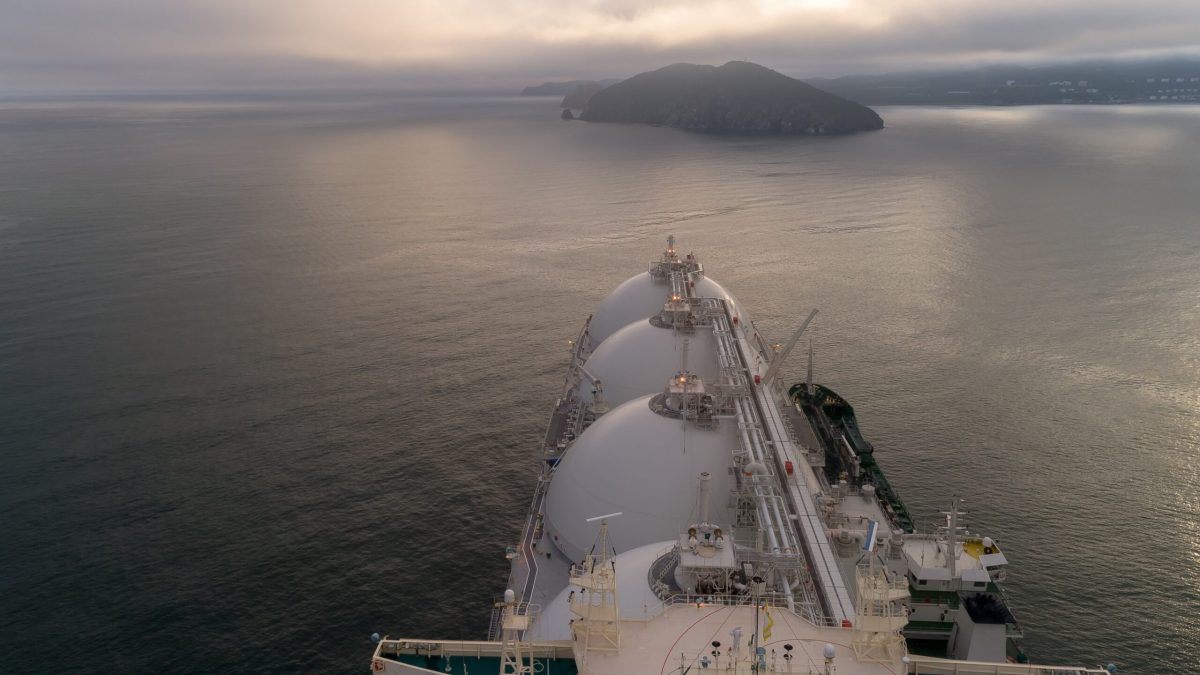Natural gas prices have risen significantly in recent weeks as the market braces itself for winter.
Colder temperatures, but also a high use of gas-fired power generation, have led to the first withdrawals from gas storage facilities in Europe.
Storage level was significantly lower at 93.3% than a year ago, when the facilities were almost 100% full, according to Commerzbank AG.
However, this meant that storage facilities were still slightly better than the average of the last five years.
Rising LNG imports
Imports of liquefied natural gas (LNG) picked up sharply in October.
This followed the lowest level of imports since December 2001 in September, according to figures from the think tank Bruegel.
Supplies from all regions except Russia have increased in October, according to the data.
LNG imports to the EU dropped to 1,786 million cubic metres in the last week of September. However, imports picked up and rose to 2,102 million cubic metres during October 28-November 3, according to data from Bruegel.
Trade tensions between the US and China
“In the event of an escalating trade conflict between China and the USA, the LNG trade relationship between the two countries could be put to the test, which would likely be of benefit to European customers,” Barbara Lambrecht, commodity analyst at Commerzbank AG, said in a report.
In 2018, China imposed retaliatory tariffs of 10% on US LNG imports, which were then increased to 25% in June 2019.
This saw US LNG exports to China fall to nothing. They only started to recover when China issued tariff waivers as part of a trade deal.
“Since 2018, there have been large shifts in the global gas market, with a tight LNG market and Europe a significantly more important buyer of US LNG – which may provide some comfort to the US, if China were to target US LNG,” Warren Patterson, head of commodities strategy at ING Group, said.
But, Patterson believes that the timing is key as a significant amount of LNG capacity is set to start up towards the end of this decade.
Patterson said that this is likely to push the LNG market to a “buyer’s market”.
The US also reported a record high level of gas processing at the Freeport LNG terminal last Friday, following repeated outages this year.
Commerzbank’s Lambrecht added:
The prospects are also good, as the first LNG deliveries from Plaquemines are expected to take place in the USA in December and expanded capacities in Corpus Christi will come on stream at the end of the year.
Warmer-than-expected EU winter
According to Commerzbank AG, market players in the EU cannot be completely relaxed with the current dynamics.
The European climate service, Copernicus sees a higher probability of a mild winter, which could dampen demand for gas.
“Europe is predicted likely to see the influence of a dipole pattern of anomalies in atmospheric pressure, with lower-than-average values in polar regions and higher-than-average over mid-latitude north Atlantic and western European regions,” Copernicus said in a report.
The agency said that warmer-than-average seasonal mean temperatures could be expected in the northern parts of the EU during the cold season.
On the other hand, wetter-than-average conditions will also be seen in the northern parts and drier-than-average in the southern regions.
Prices may get support from supply risks
Meanwhile, Russian gas supplies via Ukraine would be cut off from January 1 as the transit agreement expires at the end of 2024.
Also, most of the import routes into the EU are at the heart of geopolitical tensions, which could further affect supply in the coming months.
It is difficult to see a scenario where Europe agrees to increase its reliance once again on Russian fossil fuels.
ING Group’s Patterson added:
It would be in the interest of the US that Europe continues to shun Russian fossil fuels, given the US oil and gas industry has been one of the key beneficiaries of this move.
The Dutch TTF natural gas prices have climbed 10% since last Wednesday, and were trading at 43.195 Euros per megawatt hour.
The Henry Hub natural gas contract on New York Mercantile Exchange was $2.882.
The post European gas markets on the edge ahead of winter season appeared first on Invezz

